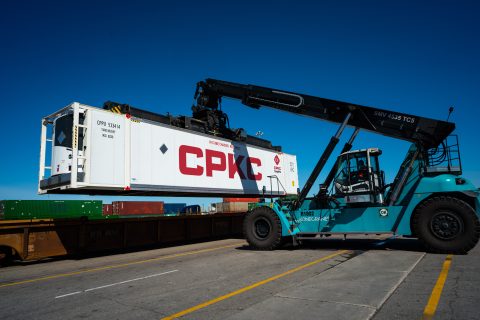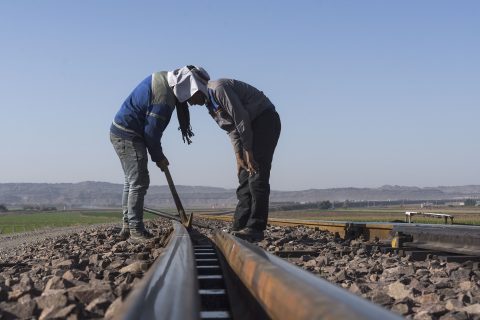Kyrgyzstan-Russia open new transport route, but what for?

A new transport route linking Kyrgyzstan and Russia via the Caspian Sea is about to open soon. The route will also cross Uzbekistan and Turkmenistan and run through the Caspian Sea, linking the port of Turkmenbashi and the port of Olya in Russia’s Astrakhan region. It is interesting for two reasons: it will bypass Kazakhstan, and it will be used to re-export products coming from China to Russia.
The route is ready to be launched from the Russian side, according to the Trend News Agency. Igor Babushkin, the local governor of the Astrakhan region, also commented during the St. Petersburg International Economic Forum that Russian shipping companies are ready to start operations.
He also mentioned that shipbuilding is among the main priorities to increase the Caspian Sea transport capacity. In his words, this route would help grow the International North-South Transport Corridor (INSTC) while reducing transport costs. But is this the case?
Why not through Kazakhstan?
As mentioned, the Kyrgyzstan-Russia route will transit via Uzbekistan and Turkmenistan. Whether rail will be used in this case is still unclear. However, there is already a history of China dispatching shipments via road from Kashgar (China) to Osh (Kyrgyzstan), which then tranship on rail and continue their way to Afghanistan via Uzbekistan. A similar solution could be implemented in this case to reach the port of Turkmenbashi.
But why take the rough and underdeveloped road when the same could work via Kazakhstan? One could say that Kazakh-Chinese border crossings and the Kazakh network are already too busy and cannot take more volumes. However, there seems to be something more about the route’s nature. Trend News Agency quoted Daniyar Amangeldiyev, the Kyrgyz minister of economy and commerce, saying that the new route will be used to re-export products coming from China to Russia since Chinese entrepreneurs “face problems with transit through Kazakhstan”.
For the record, Kazakhstan is trying hard to adhere to Western sanctions on Russia. That being said, the Central Asia country has not imposed sanctions on Russia itself, but it follows the EU’s sanctions, for instance, and does not allow the transit of sanctioned goods via its territory. This might explain the transit challenges mentioned above. It can also explain why products will start finding their way to Russia through Kyrgyzstan, Uzbekistan and Turkmenistan since non of these countries has imposed similar restrictions.
Also read:




